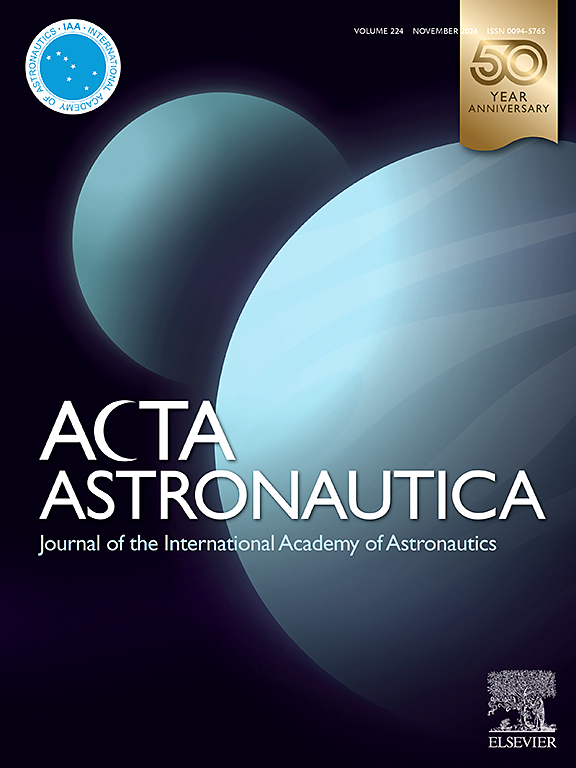A graph-based framework of low-energy transfer design
IF 3.1
2区 物理与天体物理
Q1 ENGINEERING, AEROSPACE
引用次数: 0
Abstract
Exploring the solution space of low-energy transfer trajectories in the multi-body gravitational environment is a challenging task. The highly nonlinear dynamics and many degrees of freedom of control inputs lead to a vast variety and number of possible solutions. This paper develops a graph-based framework for computing low-energy transfer trajectories in a multi-objective fashion. The graph nodes are represented by the periapsis states and their connectivity is evaluated by the fixed-time-of-arrival method. This paper introduces special apsis conditions, with which pivotal dynamical objects in the low-energy regime such as the zero-velocity surface, the recently identified barrier surface, and symmetric periodic orbits associate, to generate the periapsis states in a practical manner. Initial guess solutions are obtained as shortest paths in the graphs that are optimized to minimize the fuel cost. The framework is shown to be effectively applicable to distinct phase-space regions in a unified manner demonstrating its versatility in the complex dynamical environment. This paper finds new Pareto solutions in the halo-to-halo transfer problem as well as the high-energy excursion technique that enhances the flyby effect in the multi-flyby transfer problem as by-products of the applications.
求助全文
约1分钟内获得全文
求助全文
来源期刊

Acta Astronautica
工程技术-工程:宇航
CiteScore
7.20
自引率
22.90%
发文量
599
审稿时长
53 days
期刊介绍:
Acta Astronautica is sponsored by the International Academy of Astronautics. Content is based on original contributions in all fields of basic, engineering, life and social space sciences and of space technology related to:
The peaceful scientific exploration of space,
Its exploitation for human welfare and progress,
Conception, design, development and operation of space-borne and Earth-based systems,
In addition to regular issues, the journal publishes selected proceedings of the annual International Astronautical Congress (IAC), transactions of the IAA and special issues on topics of current interest, such as microgravity, space station technology, geostationary orbits, and space economics. Other subject areas include satellite technology, space transportation and communications, space energy, power and propulsion, astrodynamics, extraterrestrial intelligence and Earth observations.
 求助内容:
求助内容: 应助结果提醒方式:
应助结果提醒方式:


